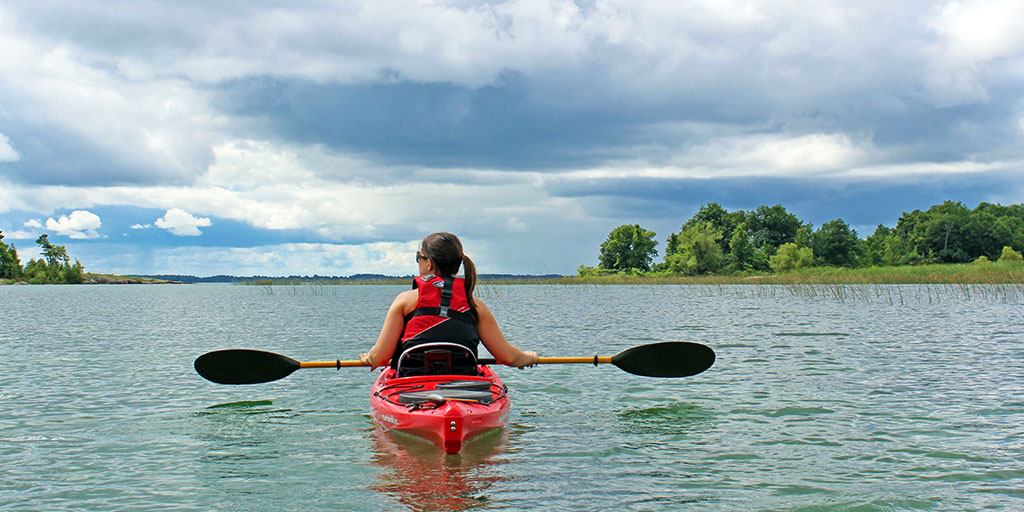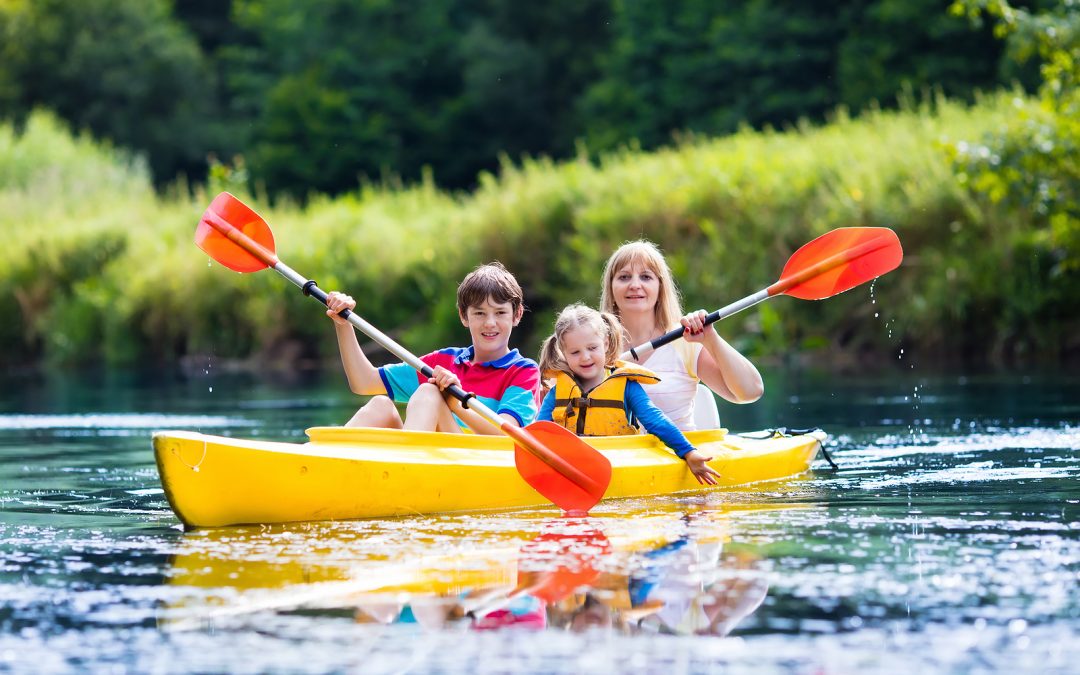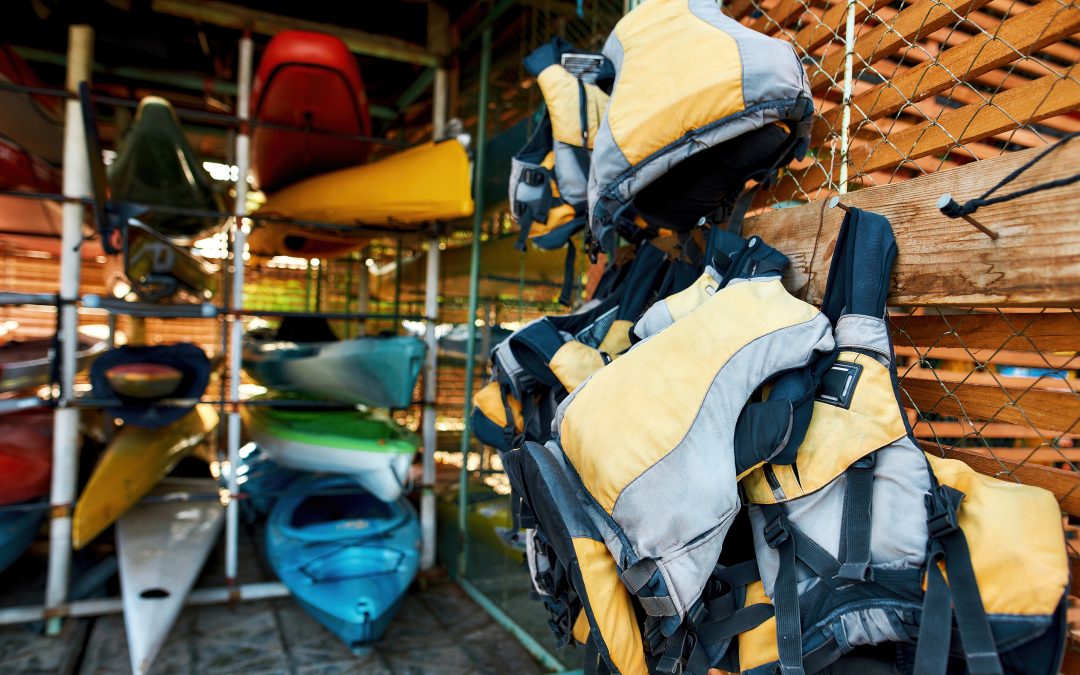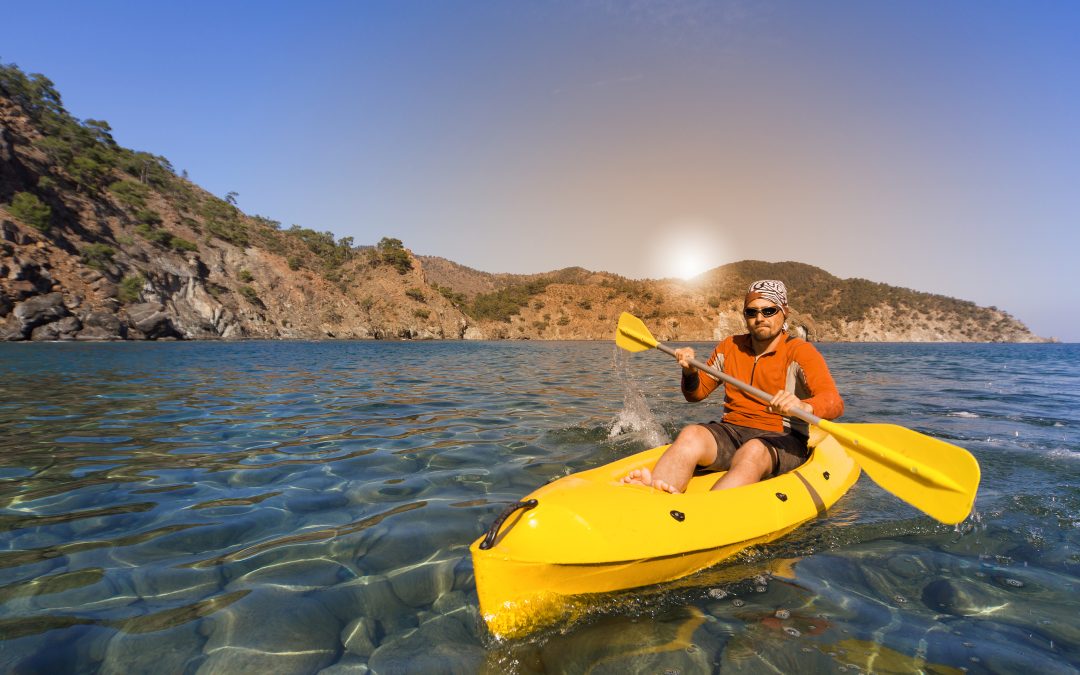Kayaking is a popular water sport that offers endless opportunities for fun, exploration, and exercise, allowing individuals to immerse themselves in nature and experience new adventures. Mastering the best kayaking paddling techniques enables kayakers to optimize their time on the water while ensuring their safety and comfort. Whether you are a novice paddler or an experienced enthusiast, learning effective paddling methods will significantly enhance your kayaking experience and enable you to tackle various water conditions with ease.

One of the critical aspects of kayaking is understanding and mastering paddling strokes that contribute to the kayak’s movement, direction, and efficiency. By honing these techniques, you will improve your overall stability, control, and maneuverability on the water while reducing the risk of injury or strain on your body. Having the appropriate paddling strategy is essential for both recreational kayaking and competitive events, as it will allow you to navigate through calm waters, rivers, and rough ocean waves with confidence.
Choosing the right equipment, such as the appropriate paddle and kayak, is also fundamental to your success and enjoyment on any kayaking excursion. By understanding the different variables like paddle features, variations, and handling techniques, you can make well-informed decisions on which equipment is most suitable for you and your unique circumstances. Additionally, building strength and endurance through regular practice will enable you to advance your paddling skills while enhancing your overall fitness level.
Key Takeaways
- Mastering paddling strokes improves stability and control on the water.
- Choosing the right equipment enhances kayaking experiences and safety.
- Building strength and endurance supports advanced paddling skills.
Understanding the Basics of Kayaking
Kayak and Paddle Anatomy
To excel in kayaking, it is important to understand the basic anatomy of a kayak and paddle. Kayaks are made up of a hull, which is the main body of the kayak, and a cockpit where the kayaker sits. The paddle consists of a shaft, which is the long middle portion, and two blades on either end. The blades may be matched (parallel) or feathered (at an angle to one another), with beginners generally finding it easier to learn with matched blades.
The Importance of Posture and Body Position
Good posture and proper body position are key factors when learning how to correctly paddle a kayak. Sitting up straight and engaging your core muscles provides the necessary back support, which in turn helps prevent injury and fatigue during long paddling sessions. In addition, maintaining a proper sitting position with your legs bent slightly, feet placed comfortably on foot pedals or foot pegs and knees in contact with thigh braces, allows for better control over the kayak while paddling.
Below are some tips on maintaining proper kayak paddling technique:
- Posture: Sit upright with a straight back and relaxed shoulders.
- Legs: Position your legs about hip-width apart, slightly bent, with knees in contact with thigh braces.
- Feet: Place your feet comfortably on foot pedals or pegs, adjusting them if necessary to ensure proper fit.
- Paddle grip: Hold the paddle with both hands, shoulder-width apart, with a relaxed grip.
- Paddle angle: Keep the paddle blades parallel to the water surface to start, progressing to a slightly angled position for more advanced techniques.
Adhering to these guidelines for proper kayaking posture and body position can lead to a more enjoyable and efficient kayaking experience. By focusing on the basics of kayaking, you are setting the foundation for mastering advanced paddling techniques and maneuvers.
Key Takeaways
When it comes to kayaking, mastering efficient paddling techniques is essential for a smooth and enjoyable experience. Here are some key takeaways to keep in mind when you’re on the water:
- Choose the right paddle: Paddles come in various materials like plastic, fiberglass, and carbon fiber. Plastic paddles are lightweight and affordable, making them suitable for beginners. However, fiberglass paddles offer a better balance between weight and durability, making them ideal for intermediate or more experienced kayakers [3].
- Master the basic strokes: Your primary strokes should include the forward stroke for moving ahead, the reverse stroke for moving backward, and the sweep stroke for turning. Being confident in these strokes will ensure better control and maneuverability while kayaking [5].
- Learn advanced techniques: As you progress, it’s important to acquire advanced kayaking techniques, such as edging, ferrying, and eddy turns. These skills will enable you to navigate through challenging water environments like rapids and currents with ease.
- Practice balance and stability: Maintain a low center of gravity and use your hips to adjust your balance. This will improve your overall stability in the kayak and reduce the likelihood of capsizing.
- Paddle efficiently: To minimize fatigue and maximize your speed, engage your core muscles while paddling rather than relying solely on your arms. This will help you achieve a more powerful and efficient stroke [5].
Remember, practicing and perfecting these techniques in calm waters will enable you to enjoy a safer and more rewarding kayaking experience. As your skills improve, don’t be afraid to take on new challenges and explore different types of water environments.
Mastering Paddling Strokes
The Forward Stroke
The forward stroke is the most basic and essential of all kayak paddling techniques. It is the primary method used to propel the kayak forward. To execute an efficient forward stroke, the paddler should maintain an upright posture with their feet on the foot pedals and knees slightly bent outwards ^(1). The catch phase, power phase, and 90-degree angle are crucial aspects of a powerful forward stroke ^(2).
The Reverse Stroke
The reverse stroke is vital for slowing down or stopping the kayak. It is performed by placing the blade of the paddle behind the kayak’s cockpit and pushing the water away from the stern. The paddler should engage the major muscle groups and maintain proper posture for optimal efficiency ^(3).
Sweep Strokes for Turning
Sweep strokes make turning the kayak smooth and easier. A sweep stroke can be performed on either side of the kayak to facilitate turning. The paddler should maintain a wide and powerful sweeping motion during the sweep stroke while ensuring the blade remains completely submerged in the water. Mastery of the low brace turn can further enhance turning efficiency ^(4).
The Draw Stroke
The draw stroke is used to move the kayak laterally. To execute the stroke, the paddler reaches out with the paddle blade, placing it in the water perpendicular to the kayak, and then pulls the water towards the boat. The sculling stroke, a variation of the draw stroke, provides additional stability while moving sideways ^(5).
In summary, mastering various paddle strokes such as the forward stroke, reverse stroke, sweep stroke, and draw stroke is crucial for a smooth and efficient kayaking experience. Proper posture, technique, and practice contribute to improved kayak paddling performance.
Paddle Handling Techniques
Grip and Control
One of the most important aspects of kayaking is how you grip your paddle. A proper grip allows for better control and maneuverability. Hold the paddle with a relaxed grip, ensuring that your fingers and thumb wrap around the paddle shaft, while your other hand rests on top of the paddle blade. Avoid squeezing the paddle too tightly, as this can lead to fatigue and decreased control.
It is important to position your hands correctly along the paddle shaft. A common technique is the shoulder-width grip. To find the ideal grip width, hold your paddle horizontally above your head, and adjust your hand placement until your arms form a right angle at the elbow.
Stroke Mechanics
The foundation of good paddling technique revolves around effective stroke mechanics. The two primary strokes used in kayaking are the forward stroke and the sweep stroke.
-
Forward Stroke: The forward stroke is the primary technique used to propel your kayak through the water. Start with your paddle blade fully submerged in the water, and engage your torso to pull your paddle through the water, maintaining minimal arm movement. This allows you to generate power from your core muscles. Additionally, proper coordination between the paddle blades and paddle shaft is crucial for an efficient forward stroke. You can learn more about the paddle blade optimization from this guide.
-
Sweep Stroke: The sweep stroke is used for turning your kayak. This stroke entails a wide, sweeping motion of the paddle blade. A forwards sweep starts from the bow and moves towards the stern, while a reverse sweep starts from the stern and moves towards the bow of the kayak. Make sure to use your entire arm and body to generate leverage during both types of sweep strokes.
By developing and refining your paddle handling techniques, you’ll experience greater efficiency and safety while kayaking. Remember to maintain a relaxed grip and proper hand positioning to maximize control, and practice various stroke mechanics for smooth and effective navigation.
Advanced Paddling Maneuvers
Using the Rudder and Skeg
Proper use of the rudder and skeg helps control your kayak in challenging conditions. The rudder, a device mounted on the stern, assists in turning the boat and holding a straight course. When deploying the rudder, use your feet to control it by adjusting the pedals inside the kayak. In contrast, the skeg, an adjustable fin situated in the kayak’s hull, enhances straight-line tracking and prevents the kayak from being blown off course. Deploy the skeg partially or fully depending on the wind and water conditions.
Bracing and Rolling
Bracing and rolling are essential techniques for advanced kayakers. Bracing allows you to maintain balance and stay upright, particularly during rough water or sudden impacts. There are two main types of braces: the high brace and the low brace. The high brace uses the power face of the paddle for support, while the low brace uses the non-power face. Practice bracing in calm conditions to build confidence and muscle memory.
Rolling is the skill of righting your kayak after capsizing while remaining seated inside. There are multiple rolling techniques, such as the sweep roll and the C-to-C roll. Mastering the roll not only helps avoid wet exits but also improves overall kayaking safety. Practice rolling in calm, shallow waters – ideally with a buddy or an instructor nearby.
Navigating Wind and Water Conditions
Understanding and navigating wind and water conditions are crucial in advanced kayaking. Be aware of potential hazards, like submerged obstacles, strong currents, and large waves. Consider taking a course in navigation, where you can learn to read marine charts, tide tables, and identify seabed characteristics. This knowledge allows you to plan routes, estimate travel times, and make informed decisions on how to safely turn the boat and control your kayak in various conditions.
Remember, always paddle within your skill level and take precautions, such as checking weather forecasts and informing others of your paddling plans.
Building Strength and Endurance

Developing Core and Upper Body Muscles
A crucial aspect of kayaking is having a strong core and upper body. These muscle groups help you maintain balance, generate power, and maintain control while paddling. To develop core and upper body strength, focus on exercises that target these areas. Some effective exercises to consider include:
- Plank Variations: Planks are great for building your core strength. Experiment with different plank variations such as forearm plank, side plank, and reverse plank.
- Push-ups: This classic exercise targets your chest, shoulders, and triceps, as well as your core.
- Pull-ups: Pull-ups focus on your back and biceps, providing essential power for paddling.
- Kayak-Specific Exercises: Incorporating exercises that mimic kayak paddling will help to isolate the specific muscles needed. For example, seated cable rows and seated medicine ball twists can enhance your paddling performance.
Include these exercises in your strength training for kayaking routine to target the essential muscles effectively.
Practice and Training
In addition to building strength, it’s vital to practice paddling techniques and train in the water, improving your endurance and technical skills. Some useful training exercises are:
- Flatwater sessions: Paddle at a moderate pace, in flat water, to build your base endurance. Over time, gradually increase the duration and intensity of these sessions to improve your stamina and power.
- Interval training: Introduce interval training by adding bursts of faster paddling, followed by a recovery period, as suggested in the Ultimate Kayak Training Program.
- Technique drills: Pay special attention to your paddling form. Repeat specific strokes, such as forward stroke, sweep stroke, and draw stroke, to perfect your technique and enhance your efficiency in the water.
Incorporate these activities alongside strength training to train for kayaking, ensuring a well-rounded approach to boost endurance, strength, and balance. Remember to engage your core muscles, torso muscles, and even leg muscles while performing these training exercises to make the most out of your workouts.
Paddle Features and Variations

Kayaking is a popular water sport and having the right paddle is crucial for an enjoyable experience. In this section, we will discuss the different paddle features and variations, focusing on feathered vs. unfeathered paddles, as well as asymmetrical vs. symmetrical blades.
Feathered vs. Unfeathered Paddles
Feathered and unfeathered paddles have unique properties that suit different paddling styles and conditions.
Feathered Paddles have blades that are offset at an angle to each other. One blade is angled upward while the other is angled downward, reducing air resistance when the paddle is lifted out of the water. Feathered paddles provide efficient stroke transitions, which can be helpful for long-distance kayaking or paddling in windy conditions. A potential downside of feathered paddles is that they require a degree of wrist rotation, which might be uncomfortable for some paddlers.
Unfeathered Paddles have blades that are parallel to each other, simplifying the paddling motion. They are suitable for beginners, as they allow for a more straightforward learning curve. Although unfeathered paddles can create more air resistance during the recovery phase, they offer a more comfortable wrist position for many paddlers.
Asymmetrical vs. Symmetrical Blades
Kayak paddles can also be differentiated by the shape of their blades. Two main blade shapes are asymmetrical and symmetrical.
Asymmetrical Blades are designed with a shorter and a longer side, resulting in a more efficient transfer of power during the paddle stroke. The blade’s shape moves more water as it is pushed through, allowing for increased propulsion. Asymmetrical blades are popular among recreational, touring, and sea kayakers who value efficient and smooth paddling.
Symmetrical Blades have equal length sides, offering a more traditional kayak paddle design. They are usually found on flat, wide blades used in whitewater kayaking. Symmetrical blades provide predictable behavior in the water, making them the preferred choice for paddlers who need precise control in challenging environments, such as navigating rapids or performing tricks.
In summary, there are several factors to consider when choosing the right kayak paddle, such as whether to use a feathered or unfeathered paddle, and deciding between asymmetrical or symmetrical blade shapes. Understanding these paddle features and variations will enable kayakers to make an informed decision and select the most suitable paddle based on their paddling style and preferences.
Choosing the Right Equipment

Selecting Kayaks and Paddles
When starting your kayaking journey, it is essential to select the appropriate equipment to ensure an enjoyable and safe experience. First, decide whether to rent or buy a kayak. Renting is a great option for beginners, as it allows you to try out different kayaks before making a purchase. Consult with a professional from a reputable store, like REI, for guidance on choosing a kayak that suits your needs.
There are various types of kayaks available, each designed to cater to specific requirements. A table highlighting the different types of kayaks is provided below:
| Kayak Type | Usage |
|---|---|
| Recreational | Calm waters, beginner-friendly |
| Whitewater | Rapid waters, advanced skill level |
| Touring/Sea | Long distance, ocean waters |
Paddles come in different lengths, materials, and blade angles. It is crucial to select a paddle that complements your paddling style and strength. A lightweight paddle ensures agility and reduced fatigue, while a heavier one provides stability and power. When choosing a paddle, hold it with a slight bend in your elbows to create an efficient stroke, and angle your blades at 90 degrees for maximum power in each stroke1.
Safety Gear and Clothing
Safety gear, such as a Personal Flotation Device (PFD) and a helmet, is essential for all kayakers. Choose a PFD that fits comfortably and securely. It is recommended to try on a PFD before purchasing. When going on a guided kayaking trip, make sure to have an experienced guide who gives proper instructions.
Wearing appropriate clothing is equally important. Opt for quick-drying materials like synthetic or wool fabrics, instead of cotton. Dress in layers to ensure warmth and adaptability to changing weather conditions.
In addition to gear and clothing, it is beneficial to enroll in a kayaking class led by an experienced instructor. This will help you learn proper techniques and become familiar with essential safety measures. Moreover, watching instructional videos and learning from experienced kayakers can further enhance your skills2.
Footnotes
Frequently Asked Questions

What is the correct technique for holding a kayak paddle to ensure efficiency?
To properly hold a kayak paddle, maintain a relaxed grip while keeping your hands slightly wider than shoulder-width apart. Make sure your knuckles are in line with the paddle blades. When paddling, use a combination of arm, shoulder, and torso movements for greater efficiency, as described in this Paddling.com article.
Which stroke is typically used for maintaining a straight course while kayaking?
The forward stroke is the primary technique used for maintaining a straight course while kayaking. This stroke involves alternating arm and shoulder movements while rotating your torso to maximize power and maintain a straight path. Learn more about kayak strokes from this REI Expert Advice page.
How can I increase my kayaking speed with proper paddling methods?
Increasing your kayaking speed comes from using proper technique and building paddling strength and stamina. Ensure that you are efficiently performing the forward stroke and practice other key strokes like the sweep and draw strokes. You may also want to consider joining a kayaking community as suggested on this KayakPaddling.net guide, which can help you learn from more experienced paddlers and improve your skills.
Can you list the essential kayak strokes every paddler should know?
The essential kayak strokes every paddler should know include the forward stroke, reverse stroke, sweep stroke, draw stroke, and brace stroke. Each of these strokes is useful for various maneuvers and situations while kayaking. You can learn more about these strokes in this REI article.
What are the common mistakes to avoid when paddling a kayak?
Common mistakes to avoid when paddling a kayak include improper paddle grip, inefficient stroke technique, poor body posture, and not utilizing torso rotation. These mistakes can lead to decreased efficiency, reduced speed, and increased fatigue. A beginner’s guide to kayak paddling technique found on Peaceful Paddle provides useful information to avoid these mistakes.
What design features make a kayak paddle ergonomic and efficient?
Kayak paddle design features that contribute to ergonomics and efficiency include a lightweight construction, appropriate paddle length, blade shape, and shaft design. Additionally, some paddles feature adjustable feathering to optimize the angle between blades, as explained on the REI Expert Advice page. Choosing the right paddle design that suits your paddling style, body size, and skill level will significantly impact your overall paddling experience.
Conclusion

In summary, there are several kayaking paddling techniques to maximize efficiency and control while navigating through various water conditions. Some of the most effective methods involve proper grip, blade angle, and stroke execution. Utilizing these techniques ensures a more enjoyable and safe kayaking experience.
- Proper paddle shaft grip: Holding the paddle with a slight bend in your elbows allows for an efficient stroke1. This positioning provides the best mix of power and control during each stroke2.
- Proper paddle blade angles: Angling the blades at 90 degrees optimizes the power of each stroke1. This also helps generate maximum propulsion during both the catch phase and the power phase1.
- Advanced Turning and Maneuvering: Steering a kayak efficiently requires a blend of methods, such as bow rudder and stern rudder3. The bow rudder involves placing the paddle near the kayak’s bow to pivot and turn, while the stern rudder uses the paddle at the stern as a steering mechanism3.
Additionally, adjusting foot pedals and mastering launching techniques can enhance your ocean kayaking experience4. Remember to always prioritize safety and practice these paddling techniques to improve your overall kayaking skills. Happy paddling!











